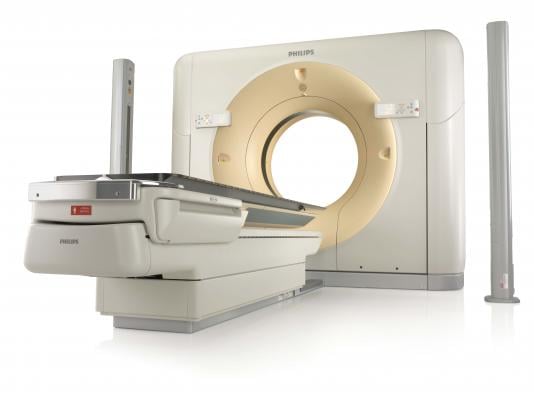
October 7, 2016 — Philips Healthcare featured its latest integrated imaging and treatment planning solutions for radiation oncology at the American Society for Therapeutic Radiology and Oncology’s (ASTRO) 58th Annual Meeting, Sept. 25-28 in Boston. Designed to fit the unique needs of radiation oncology clinicians and patients, these solutions have been developed to put more control in the hands of the clinician, with the intent to improve workflow and operational efficiencies, drive procedure accuracy and ultimately improve care.
Over the past few years, cancer care has evolved to deliver more advanced treatments and technologies that do not always integrate seamlessly. For example, the treatment plan plays a big role in determining the quality of the treatment itself. For most patients, this means waiting for a week or more after their simulation scan to start their treatment, which can lead to increased anxiety. According to the National Cancer Institute, in many cases, this not only affects a patient’s ability to cope with treatment, but also impacts their quality of life. As technology and treatments for cancer advance, the patient experience remains first and foremost.
The Philips booth at ASTRO 2016 showcased the company’s advanced solutions enhancing its integrated radiation oncology approach with a full suite to help clinicians deliver quality cancer care to improve both the patient and staff experience.
Meeting offerings included the following:
- CT Big Bore v4.2 with Tumor LOC and iPatient Platform – A computed tomography (CT) simulation solution designed for every cancer patient, delivering accuracy, reliability and an efficient workflow to drive clinical confidence in cancer treatment. Now integrated with both Philips’ Tumor LOC technology and iPatient Platform, Big Bore offers more powerful simulation and advanced marking tools to help speed time to treatment. Powered by Pinnacle3, TumorLOC integrates scanning and planning to simplify and accelerate patient marking and CT simulation at the scanner console. Philips’ iPatient platform provides consistent image quality from scan-to-scan through patient-centered workflows for both routine and advanced 4-D imaging applications, making patient setup fast and easy.
- Ingenia MR-RT – a dedicated magnetic resonance (MR) simulation platform providing clinicians with high-quality MR images acquired in the treatment position to help visualize targets and critical structures, allowing them to design the best possible treatment plans. The MR-only simulation for prostate treatment planning was recently given 510(k) clearance by the U.S. Food and Drug Administration (FDA). At ASTRO, Philips also showcased developments in intelligent workflow automation, such as automated contouring on MR-only based datasets (a work in progress).
- Pinnacle3 — Now with a new intuitive user interface, Pinnacle³ offers seamless integration that enhances planning efficiency and quality while making plan workflow faster and less iterative. Pinnacle3 intelligent automation simplifies and accelerates the intensity modulated radiation therapy (IMRT) and volumetric modulated arc therapy (VMAT) planning process. Smart automation tools enable the user to create plans with limited clinician intervention while reducing the dose variability of manual planning workflows.
For more information: www.usa.philips.com/healthcare


 April 18, 2024
April 18, 2024 








